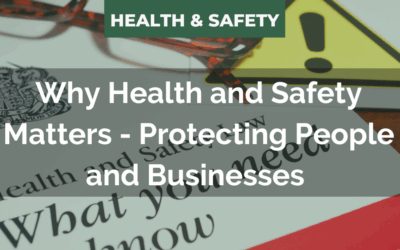Fire risk assessments are a fundamental legal requirement in the United Kingdom that could, to be blunt, be the difference between life and death. Understanding your obligations under UK fire safety legislation is crucial for anyone responsible for premises, whether you’re a business owner, landlord or facilities manager.
The legal requirement for fire risk assessments stems from comprehensive legislation which creates a unified risk-based approach that places clear legal duties on “responsible persons” to assess and manage fire risks in virtually all non-domestic premises.
The fundamental principle is simple: if you have control over premises that are not a single private dwelling, you must ensure fire risks are properly assessed and managed because systematic risk assessment is the foundation of effective fire prevention.
Who must conduct fire risk assessments?
The duty falls on the “responsible person,” typically the employer in workplace settings, the owner of the premises, or any person with control over the premises. In multi-occupied buildings, there may be several responsible persons, each accountable for their respective areas. Where there are multiple responsible people there are requirements for cooperation and information sharing between them, including clear identification of responsibilities and sharing of fire safety information.
What must be included?
A comprehensive fire risk assessment must systematically address many different elements, as a brief overview, the fire risk assessment must address the following 4 areas of oversight.
Firstly, it must identify all fire hazards including potential sources of ignition such as electrical equipment and heating systems, fuel sources and oxygen sources including ventilation systems.
Secondly, it must identify all people who may be at risk, with particular attention to vulnerable individuals including elderly people, children and those with disabilities.
Thirdly, the assessment must evaluate the likelihood of fire occurring and assess potential consequences. It must determining whether existing fire safety measures are adequate and what additional precautions might be needed.
Fourthly, it must encompass all fire safety measures and emergency planning, including detection systems, emergency lighting, escape routes, evacuation procedures, and staff training requirements.
When must assessments be completed?
Fire risk assessments must be completed before premises are first occupied for business purposes, when taking over responsibility for existing premises, and whenever there are material changes to the premises or activities. The law requires regular reviews. Our advice is that a fire risk assessment should be reviewed annually by a competent person.
Immediate review is required following structural alterations, changes in use or occupancy, installation or modification of fire safety systems, any fire incident, or enforcement action by authorities. This ongoing requirement reflects that buildings and their uses evolve over time, and fire safety measures must adapt accordingly.
Who should complete assessments?
UK law requires assessments be conducted by a “competent person” with sufficient training, experience and knowledge. Business owners may conduct their own assessments if they possess adequate fire safety knowledge, with government guidance available to support self-assessment for smaller, lower-risk premises.
For complex premises or where expertise is lacking, appointing a professional fire risk assessor is advisable. Professional assessors should possess relevant qualifications, practical experience, thorough understanding of current legislation, appropriate insurance, and a commitment to ongoing professional development. Should a fire risk assessment be conducted under our Health & Safety Solution all of our assessors and consultants are qualified to at least FPA Level 4 ABBA.
What are the consequences of non-compliance?
Non-compliance can result in unlimited fines, imprisonment for up to two years, prohibition notices closing premises, and enforcement notices requiring immediate action. Business impacts can include insurance invalidation, premises closure, reputational damage and civil liability. Most critically, inadequate fire safety can result in loss of life, with sixty percent of businesses failing to recover after major fires.
Conclusion
Fire risk assessments represent both a legal obligation and moral responsibility to protect lives and property. Whether conducting assessments yourself or engaging professionals, the approach must be thorough, documented, and regularly reviewed. Fire safety is an ongoing responsibility requiring continuous attention to maintain compliance and, most importantly, keep people safe from fire’s devastating effects. Contact us to find out how we can help you with your fire safety obligations.




